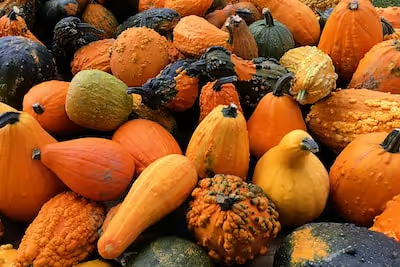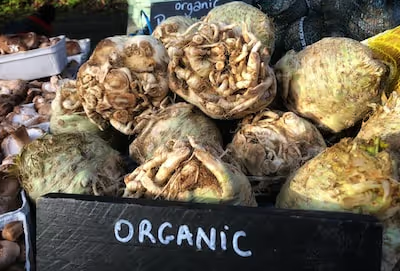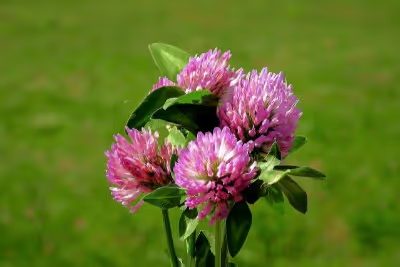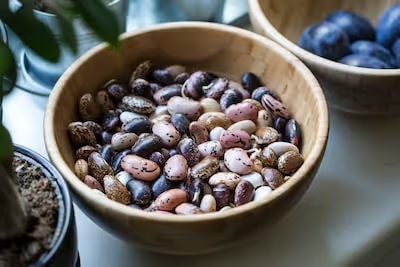Growing Primrose: Essential Care Tips for Beautiful Blooms
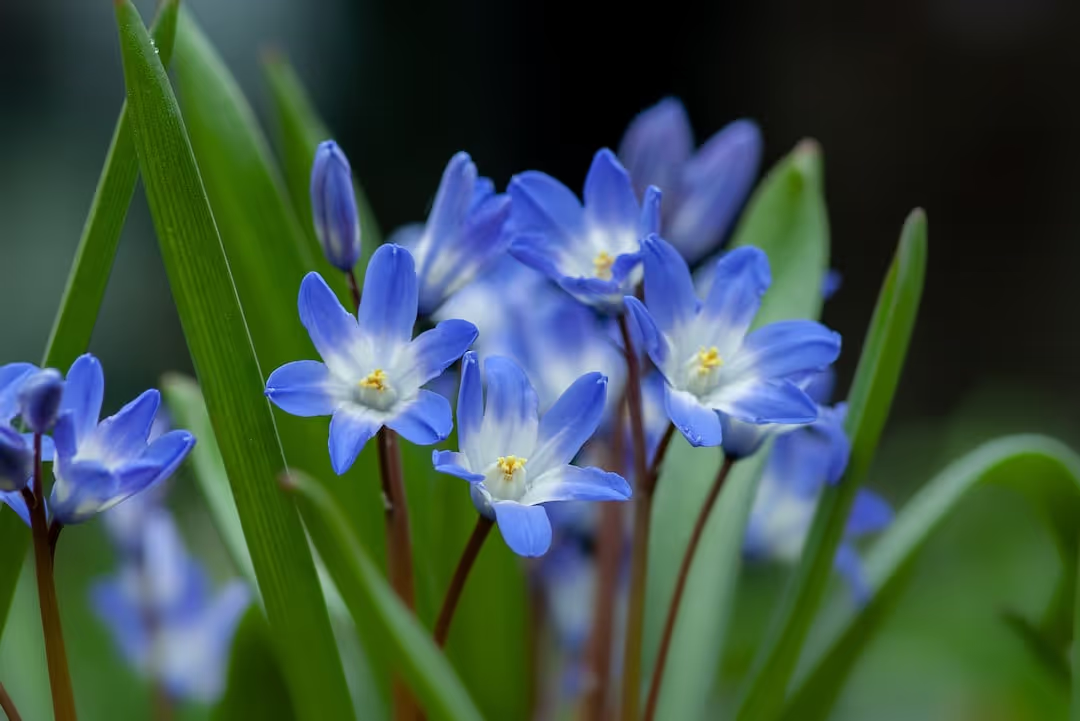
Growing Primrose
Growing primrose brightens shady garden corners, adding vibrant color in cool spring weather. Hardy and low-maintenance, primroses thrive in moist, nutrient-rich soil with partial shade. Master growing primrose successfully with straightforward planting methods and simple care tips outlined below.
Cheatsheet: Primrose Blooming Made Simple
🌞 Site & Soil
- Plant in part shade; avoid midday sun.
- Use moist, well-drained soil (pH 6.0-7.0).
- Mix in organic compost.
💧 Watering
- Keep soil damp, not soggy.
- Water 2x weekly; increase in heat.
🌱 Planting
- Set transplants 6-12 in (15-30 cm) apart.
- Plant seeds 1/8 in (3 mm) deep, barely covered.
- Best soil temp: 50-65°F (10-18°C).
🍃 Feeding
- Apply low-nitrogen fertilizer every 4-6 weeks.
- Mulch with leaf mold to maintain moisture.
✂️ Upkeep
- Deadhead spent blooms for repeat flowering.
- Divide clumps every 2-3 years.
- Remove faded leaves to deter slugs.
🐌 Pests & Problems
- Watch for slugs, aphids, crown rot.
- Use sand/eggshells to block slugs.
- Neem oil helps aphid management.
🛠️ Tools and Products You'll Need
- Hand trowel, watering can, gloves
- Compost, mulch, low-nitrogen fertilizer, seeds or starter plants
- Neem oil, slug deterrent (sand/eggshells)
🌸 Self-Sufficiency & Benefits
- Primrose flowers are edible—use in salads or desserts.
- Rich in Vitamin C, supports immunity.
- Attracts pollinators; increases garden biodiversity.
✨ Fast Fact
- Over 400 species in the Primula family.
- Primrose blooms can last 8+ weeks in cool weather.
-
Growing Primrose: Essential Care Tips for Beautiful Blooms
I grow primroses for that electric pop of color that laughs at late winter. Growing Primrose rewards patient hands and cool soil more than any fancy trick.
Quick profile for fast success
- Type: Primula species and hybrids, mostly cool-season perennials.
- Hardiness: Many thrive in USDA Zones 3 to 8, with species variation.
- Light: Bright shade or morning sun with afternoon shade.
- Soil: Moist, humus-rich, well drained, pH 6.0 to 7.0.
- Temps: Best bloom in 45 to 65 F, 7 to 18 C.
Many Primula selections are hardy garden perennials in USDA Zones 3 to 8, according to Missouri Botanical Garden and several university extension references.
Site and soil: cool roots, gentle light
Primroses crave moist but free-draining soil loaded with leaf mold or compost. I amend beds with 2 inches 5 cm of compost and a handful of fine grit per square foot 0.1 m² to keep crowns from sitting wet.
They light up in dappled shade under deciduous trees. In cold regions I give an hour or two of morning sun for stronger bloom color.
Water: steady, never soggy
These plants evolved for stream edges and woodland seeps, so consistency matters. Aim for about 1 inch 25 mm of water per week, bumping to 1.5 inches 38 mm during spring wind or sandier soils.
I water at soil level to keep leaves dry and to dodge botrytis. A 1 to 2 inch 2.5 to 5 cm mulch of shredded leaves keeps the root zone cool and even.
University extension guidance often targets about 1 inch 25 mm of weekly water for herbaceous perennials during active growth, adjusted for rainfall and soil type.
Feeding for flowers, not floppy leaves
Too much nitrogen builds salad, not blooms. I use a balanced slow-release fertilizer at half rate, roughly 1 tablespoon per 10 square feet 50 g per 9 m² in early spring, then again very lightly after peak bloom.
Liquid feed at quarter strength can rescue tired pot plants in midseason. Stop fertilizing in late summer to let plants harden for winter.
Light and temperature sweet spot
Primroses color best with bright light and cool air. If day highs push past 75 F 24 C, shift containers to brighter shade and add mulch to drop the root zone a few degrees.
In hot-summer zones I treat some hybrids like long-blooming spring annuals. In cool-summer climates they settle in for years.
Containers that keep their cool
For pots I blend two parts peat-free potting mix, one part leaf mold or coir, and one part 3 to 6 mm horticultural grit. Clay pots breathe and help avoid crown rot in rainy spells.
Water thoroughly, then let the top half inch 1.2 cm dry before watering again. Never leave saucers full after 30 minutes.
Deadheading, division, and longevity
Snip spent blooms with the stem to keep flowers coming and to foil seed set. Leave the basal rosette intact so the crown keeps feeding.
I divide clumps every 2 to 3 years right after flowering. Lift with a fork, tease apart, trim ragged roots, replant at the same depth, then water like you mean it.
Propagation that actually takes
Division is the sure bet for hybrids. For species from seed, I sow fresh seed on the surface since many primulas need light to germinate, then chill at 34 to 40 F 1 to 4 C for a few weeks to mimic winter.
Germinate cool at 55 to 60 F 13 to 16 C with steady moisture. Auriculas often throw offsets that root fast in gritty mix.
Pests, diseases, and IPM that works
Vine weevil larvae love primrose roots, especially in pots. I use biological nematodes labeled for vine weevil in spring and late summer, and I inspect at night for adult notches on leaves.
Slugs, snails, and aphids show up after rain. I set iron phosphate bait for slugs, blast aphids with water, and keep debris cleared to cut down botrytis and crown rot.
RHS cultural notes emphasize partial shade, humus-rich soils, and good drainage for Primula to reduce crown rot and foliar disease pressure.
Overwintering and summer survival
In cold climates, mulch after the ground freezes with 2 inches 5 cm of shredded leaves to buffer freeze-thaw. Avoid burying the crown, since a smothered crown invites rot.
In hot spells, I stash containers on the north side of a fence and mist gravel around pots to cool the microclimate. Shade cloth at 30 percent can stretch bloom by weeks.
Variety guide: best Primula for garden and pots
- Primula vulgaris English primrose: classic pastel singles, hardy about Zones 4 to 8, woodland star for carpets.
- Primula x polyantha polyanthus: big clusters on stems, outrageous color range, great for containers and borders.
- Primula denticulata drumstick primrose: spherical blooms, early and cold hardy to about Zone 2 to 3 with snow cover.
- Primula auricula auricula: thick leaves, alpine heritage, thrives in gritty mix and cool morning sun.
- Primula sieboldii Japanese primrose: lacy petals, blooms after foliage emerges, handles summer heat better with shade.
- Primula japonica candelabra primrose: loves damp soil and stream edges, tiered whorls of flowers in late spring.
- Primula veris cowslip: fragrant bells, naturalizes in meadows with leaner soil.
Buying guide: plants that pay you back
For spring pots, I buy tight-budded plants with firm, unblemished leaves and avoid peat bricks for long-term culture. For borders, young plugs establish faster than overgrown gallon plants.
Look for clear cultivar names so you can match care to parentage. Species seed from reputable collectors gives the most durable plants in tough climates.
Companions and design that make color sing
I tuck primroses under Japanese maples, with hellebores, ferns, and heuchera holding texture when the primroses rest. Early bulbs like snowdrops, crocus, and miniature narcissus weave through for layered bloom.
In pots, a ring of primrose around a dwarf conifer creates a tidy focal point. A splash of moss softens the rim and protects roots.
Troubleshooting cheatsheet
- Leaves wilt at noon, perk at night: heat stress, move to brighter shade and mulch 1 inch 2.5 cm.
- Leaves lush, few flowers: excess nitrogen or low light, reduce feed and increase morning sun.
- Plants collapse at crown: likely crown rot from soggy soil, raise the bed and add grit.
- Ragged root stubs in pots: vine weevil larvae, repot with fresh mix and apply biological control.
- Silver trails and holes: slugs and snails, use barriers and iron phosphate bait.
Field notes from years of Growing Primrose
A tray of primroses under a bare birch in March taught me patience, the blooms kept going for eight weeks in 50 to 60 F 10 to 16 C weather. I once cooked a flat in a sunny Zone 8 patio and learned to chase shade like a line cook dodging the grill.
Rainwater beats tap if yours runs hard with salts. A cheap soil thermometer tells you more about primroses than any glossy label.
Science corner, short and sweet
Many primroses need a cool spell vernalization to set heavy bud. Photoperiod plays a role, but temperature is the bigger lever for garden performance.
Species inherited moisture-loving physiology with shallow fibrous roots. That is why even moisture and surface mulch change everything.
Trusted references I revisit
Royal Horticultural Society plant pages for Primula offer cultural ranges and species notes. Missouri Botanical Garden profiles give zone ranges, bloom windows, and habit details.
University extensions Minnesota, North Carolina State, Oregon State provide region-specific watering rates and disease guidance. Kew Science offers species background and taxonomy when I want to go deep.
Frequently Asked Questions about Growing Primrose
What soil conditions best suit primroses?
Primroses thrive in organically rich, well-drained soils bursting with moisture and acidity. Work in ample compost or leaf mold to create a vibrant growing medium, and your primroses will flourish.
How much sunlight does primrose prefer?
Primroses savor the gentleness of dappled sunlight or partial shade. Shield them from harsh midday rays that might scorch their delicate leaves; position them beneath open-canopy trees for ideal exposure.
When is the best time to plant primroses?
The prime moment for planting primroses comes in either early spring or autumn, when the earth cools down and moisture dances freely. Planting in these seasons ensures lush blooms the following growing cycle.
How often should primroses be watered?
Keep primroses consistently moist without waterlogging their delicate root zone. Regular, moderate watering maintains vibrant foliage, especially during warmer months; frequency will depend on your local weather.
Do primroses need fertilizing?
Primroses appreciate a balanced, slow-release, organic fertilizer occasionally sprinkled during their active growing season. Avoid over-fertilizing—primroses prefer subtle nutrients over culinary excess.
How can you effectively propagate primroses?
The simplest method of propagation is through division—gently separate established clumps after flowering, and replant them into fresh, enriched soil. This method breathes new life and vigor into your primrose collection.
Are primroses susceptible to pests or diseases?
Primroses may occasionally attract aphids, slugs, or spider mites. Vigilant observation and swift intervention with natural pest repellents or manual removal ensure healthy plants. Ensure good air circulation to prevent fungal ailments.
Should primroses be deadheaded?
Regularly removing faded blooms (known as deadheading) prolongs the blooming period and encourages a second flush of vibrant color. This small chore genuinely rewards attentive gardeners.
Can primroses tolerate frost?
While primroses tolerate mild frost, severe cold snaps require a protective mulch or covering. Layer straw or loose compost around the base to guard against the biting chill, securing vivid blooms when warmer days return.
Growing Primrose rewards patience and care—a little attention to moisture, shade, and well-drained soil brings out those punchy blooms year after year. Nip off spent flowers to keep plants looking fresh and vibrant. If you’re after more garden projects this season, give passion flower a try—its drama pairs well with primrose charm. Divide clumps every few years to prevent crowding and keep the show going. With the right touch, growing primrose means color right when you need it most—when winter finally gives up the ghost. Your hands get dirty, your garden thanks you.
Health Benefits of Growing Primrose at Home
Natural Remedy Potential
- Evening Primrose Oil (EPO) derived from primrose seeds contains gamma-linolenic acid (GLA), aiding in inflammation reduction and balancing hormones.
- Regular intake of primrose tea contributes to respiratory comfort, easing coughs and bronchial irritation.
Nutritional Advantages
- Primrose blossoms are rich in Vitamin C; adding fresh petals to salads boosts nutrient intake and immune support.
- Consuming primrose leaves provides calcium, potassium, and iron, essential for heart and bone health.
Skin and Wellness Uses
- Topical application of diluted EPO moisturizes skin and soothes eczema symptoms effectively.
- Primrose-derived infusions soften dry skin naturally, enhancing overall skin health and appearance.
Home Self-Sufficiency
- Cultivating primrose plants ensures chemical-free medicinal and nutritional resources sustainably at home.
- Harvesting and drying flowers for year-round tea preparation supports household wellness without store dependency.
Find out which plants will thrive in your garden!
Answer a few fun questions and get custom plant recommendations perfect for your space. Let’s grow something amazing together!

start your season
